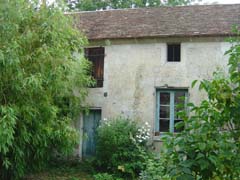Prochain point : lat="49.08693" lon="1.927080005"

Sébastien Vaillant (1669 - 1722)
The King’s botanist
Showing a very early interest in botany...
Born in Vigny on May 26, 1669, Sébastien Vaillant became interested in plants, meadows and gardens at a young age. He studied medicine and surgery at Pontoise hospital. He continued his studies in Paris where he practised as a surgeon from 1691. He studied botany under Joseph Pitton de Tournefort and collaborated with him in 1698 in "l’Histoire des plantes qui naissent aux environs de Paris » (History of plants found near Paris). He also studied anatomy and chemistry. In the 1700s, he became secretary of the botanist and physician to Louis XIV. He devoted himself entirely to the study of plants. Appointed as director of the Jardin du Roi, he enlarged the collections and had the first greenhouses installed in France.
... he was the first to discover the reproductive functions of plants
His work focused on the reproductive behaviour of plants, their classification and the identification of the functions of the pistil and stamens. He described the different species, their grouping into entities and their identification. His posthumous book, "Botanicon Parisiense" numbers, describes and classifies in alphabetical order the plants found near Paris. It was enriched with 300 illustrations drawn by Claude Aubriet, the royal botanical painter. His herbarium is kept in the National Museum of Natural History (Paris), and is the oldest on the subject of fungi, flowering plants and ferns.





